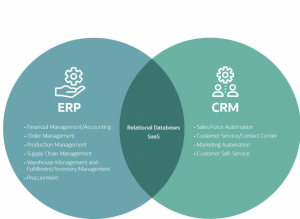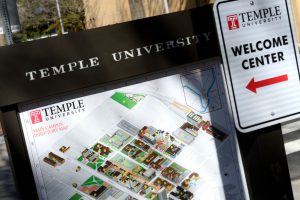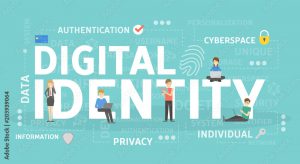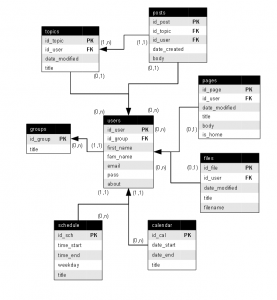Posts
3a- CRM
This week we learned two important acronyms. The first is ERP, which stands for enterprise resource planning. The purpose of an ERP is to manage entire business activities. Everything from customers to project management, to operations, ERPs take care of everything. The main objective however is to manage business operations.
The second acronym we learned was CRM. This stands for customer relationship enterprise. CRMs are responsible for improving customer relations. There are three different types of CRMs which include collaborative, analytical, and operational. The purpose of all three of these is to create exceptional customer relationships.
With that, there are a decent amount of similarities and differences between both CRMs and ERPs. For one, they are both applications that businesses use to manage everyday tasks. They both optimize processes and survey reports. As for the differences, the main difference is that ERPs are mostly for financial data and CRPs are utilized by customer service departments.

ERP vs CRM – 3a
Enterprise Resource Planning, or ERP, is a software or system that integrates important and vital aspects to a business. ERP help businesses to manage day-to-day processes and operations across finance, human resources, supply chain, and more. ERP systems can be beneficial as they integrate financial information into one system, unifying a business’s financial reporting. They also integrate order management making distribution much simpler and less error-prone all around. Some key features of ERP systems are real-time operations, a common database, and consistency. There are various types f ERP solutions that range from Tier 1 ERP to Government ERP solutions. Customer Relationship Management, or CRM, is a method for managing a company’s interaction with both current and potential customers while using past interaction data. CRM helps companies to understand their customer groups and respond quickly to the desires of their customers. CRM software is used to help understand customer needs better and how to meet those needs and enhance the company. In using CRM effectively, businesses can increase revenues by offering better customer service, helping staff close deals faster, and retaining customers while creating new ones. Both ERP and CRM are similar as they handle contracts and companies and details on orders. They are different however as CRM systems focus on the sales and support of organizations and do not do the actual work of producing and fulfilling orders as ERP users focus on the process and logistics of producing the widgets.
ERP: https://www.cio.com/article/272362/what-is-erp-key-features-of-top-enterprise-resource-planning-systems.html
CRM : https://www.cio.com/article/272365/customer-relationship-management-crm-definition-and-solutions.html
ERP vs CRM: https://www.cio.com/article/228400/crm-vs-erp-whats-the-difference-and-which-do-you-need.html
What is a Digital Identity? – 2b
My digital identity refers to how I am represented online. My digital identity is how I present myself through various forms of media such as social media networks, business networks, and other forms. My digital identity can be traced through various accounts I create from sites such as Instagram to Amazon, from LinkedIn to Esty, and so much more. A digital identity is also what makes one individual unique online compared to multiple accounts mimicking a person or based off a person. I can manage this digital identity by making conscious decisions with my accounts. I can protect my image and myself from people I do not know and even forms of spam and hackers by making my accounts private. Having a good digital identity is crucial for maintaining a positive identity. Ensuring appropriate and formal post are made are essential to create and maintain a positive outlook and reputation. Since many people have multiple forms of social media and how easy it is to look up others, having these appropriate posts are important. Digital identities are even prevalent in job searches as many businesses will look into one’s digital identity to see who the “real” applicant is and how they present themselves to the public. If one has a digital identity of crude, inappropriate, and offensive posts, many would want to avoid that person and businesses may opt to steer clear of them as well. The MIS community platform is where students are able to network and collaborate with shared professional interests. Students can share ideas and information with each other on their shared interests and even gain more knowledge on said interest or in their profession.
What is an ERD? – 2a
Entity Relationship Diagram, or an ERD, is a type of structural diagram, This diagram is used for database design and contains different symbols and connectors to visualize important information. This information displayed is the major entities within the system scope, and the inter-relationships among these entities. ERD are typically made to help a business document existing databases in order to figure out problems and spot inefficiencies to improve business processes. An ERD has 3 symbols that embodies a diagram, a rectangle for the entity (noun), an oval for the attribute (adjective), and a diamond for the relationship (verb). The two notations used for ERDs are Crow’s Foot and Chen. Cardinality is the number of values in a set when it comes to ERDs. Cardinality as three forms which are one-to-one, one-to-many, and many-to-many. One-to-one is when the relationship is from one entity to one entity. One-to-many is when the relationship is between one entity to many entities. Finally, many-to-many is the relationship between many entities to many entities.
ERDs :
https://www.smartdraw.com/entity-relationship-diagram/
https://www.visual-paradigm.com/guide/data-modeling/what-is-entity-relationship-diagram/
(3a) Temple and ERP
Hello class,

Enterprise Resource Planning (ERP) is a software or a system that integrates functions while streamlines processes that manage the core of business. ERP is widely used in many industries across the world. For example, while working in the airline industry, I used ERP system to help finding reservations and make adjustments. My part was very small in comparison with other users such as upper management. Another example of ERP is TUportal. It allows students, teachers and staff communicate effectively to achieve common goals. These systems eliminated long lines at college registrar office. Moreover, communication can be prompt and easy to access. ERP lowered costs and improved the decision-making process in addition to data integrations. Almost all fields use ERP systems such as marketing, HR, finance and risk management and more.
On the other hand, Customer Relationship Management (CRM) is customer focused system. An example of CRM is Amazon.com. their system collect data, pick recommendation and support if customers encounter issues. The main purpose of CRM systems is to create a positive customer experience. Happy customers return to buy more and recommend products to their friends and families. Another example of CRM is Salesforce. In lab, we learned how to create email messaging and automate responses.
(Image source: gettyimages.com)
(2b) My Digital Identity
Hello class,

My digital identity is my online representation of me. This includes social media, public comments, and personal data. To manage and protect my digital identity I customize my privacy settings on my web browser and social media accounts. However, after this class, I am considering using a paid online service to monitor my personal information floating on the web.
In my opinion, having good digital identity image is crucial when applying for a job because many big companies do google your name to see what comes up. Moreover, I regularly google my name from time to time to see if there is anything needs my attention.
MIS community is a platform where Management Information Systems individuals and organizations meet and collaborate on projects or new ideas. Sometimes, this community is a good source of information for students seeking jobs or internships.
During this course, I learned how to create an e-portfolio. It was easy. In this e-portfolio, I showed my skills and accomplishments. Later, I googled my name. I found my e-portfolio on the first page of search results. I will update it regularly so prospective employers can see the professional side of me.
(image source: Adobe stock)
2b- What is your digital identity, and what can you do to manage that identity? Why is it important to have a good digital identity?
Simply put, your digital identity is a representation of an individual’s personal self, just online. Their identifiers include things such as their name, date of birth, place of work, interests, and so forth. Because your digital identity contains personal information about yourself, it is crucial to keep this information safe. At a basic level, it is important to use strong passwords and never share them. Additionally, taking the time to actually think about what it is that you are putting out online is pivotal in remaining safe online. If you are able to go a step further, installing and investing in security software will further prevent your digital information from getting hacked or so forth.
Now that we have an understanding of what a “digital identity” is, it’s important to recognize the importance of having a “good” digital identity. This simply means you are being safe and smart online. Because your digital identity can include your bank information, access to healthcare portals, search history, transactions, online posts, and so much more, having all of this information safely stored and protected is critical. If not you could be at risk of fraud, identity theft, impersonation, and so much more.
What Defines MIS?
The Waterfall and Agile SDLC are two different approaches to software development. The Waterfall model is a linear sequential approach where the development process is broken down into a series of sequential phases, such as requirements gathering, design, implementation, testing, and maintenance. In contrast, Agile SDLC is a more iterative and flexible approach that involves breaking down the project into smaller pieces or “sprints” and continuously gathering feedback from stakeholders. The key difference between these two models is that Waterfall is more structured and predictable, while Agile is more flexible and adaptive. MIS, or Management Information Systems, is all about using technology to help organizations achieve their goals. This can involve designing and implementing information systems, analyzing data to make informed decisions, and managing technology resources. MIS professionals play a crucial role in helping organizations stay competitive in today’s digital world. Systems involved in everyday life can range from a simple alarm clock to a complex transportation network. These systems typically have three main components: inputs, processes, and outputs. For example, a car has inputs such as fuel and driver inputs, processes such as engine combustion and transmission shifting, and outputs such as movement and exhaust. MIS professionals work in a variety of roles, such as system analysts, database administrators, network administrators, and project managers. They are responsible for designing, implementing, and managing information systems that help organizations achieve their goals. They also analyze data to make informed decisions, manage technology resources, and ensure the security and integrity of information systems.
(2a) Entity Relationship Diagram (ERD)
Hello class,

Entity Relationship Diagram (ERD) is a visual graphic illustration of entities and their relationship together. These illustrations come in two different notations. First, Chen’s notation where entities, attribute and relationship are representation of noun, adjective and verb respectively. Second, Crow’s Foot notation where graphical symbols are used to indicate the multiple sides of relationships. There are three main types of relationships in Crow’s Foot notation. These are one-to-one, one-to-many and many-to-many.
Salesforce is a cloud-based software that designed to connect businesses with their customers and improve internal communication. The dashboard in Salesforce provides key information needed by the user. This dashboard is highly customized to suit the needs of each user. Users can select different sections of the dashboard to take them to that particular task.
When businesses look into data, they can focus on two forms of analytics, descriptive and predictive. Descriptive analytics is focused on data from the past and present to understand why a certain event took place, while predictive analytics is predicting what may happen in the future and understanding why. Supply Chain Management (SCM) is the process of how companies handle and track their goods and services that transform into raw materials into the final product. Supply Chain Management is fragile because it makes it hard to balance efficiency and inventory accurately as well as how cost distribution is handled. RFID, or Radio Frequency Identification, is wireless tech that enables identification of objects that have been fitted with radio frequency tags. It is beneficial as it helps both inventory and access control and it works when an antenna reads the electromagnetic energy. RFID can also penetrate non-metallic solid objects. RFID tags can even contain more information than barcodes and scanning can be done from a great distance. There are two different tags that can be used, passive, which are inexpensive and can only range a few feet, or active, which are more expensive but have a longer range. Some examples of RFID prevalent in society today include credit cards that can be “tapped” to pay, the Disney MagicBand, and hotel keycards. RFID helps supply chain management as it can provide useful information on numerous goods. RFID can provide information on which goods are needed and what goods are demanded more than others.